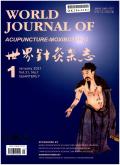Evaluation of the efficacy of electroacupuncture on pain and tolerance for unsedated colonoscopy: A study protocol for a prospective, randomized, sham-controlled trial
IF 1.3
4区 医学
Q4 INTEGRATIVE & COMPLEMENTARY MEDICINE
引用次数: 0
Abstract
Background
Unsedated colonoscopy is an important method used for diagnosing colorectal cancer, but it can cause discomfort such as pain and bloating, as well as anxiety. At present, the relief is mainly achieved through methods such as changing positions and manual pressing, but the efficacy is limited. Hence alternative therapies for sedation and analgesia in unsedated colonoscopy warrant further study. Electroacupuncture (EA) can simplify the procedure of anesthesia and analgesia, while the efficacy of EA on unsedated colonoscopy remains unclear. Therefore, a well-designed randomized controlled trial is needed to demonstrate the potential efficacy of acupuncture in unsedated colonoscopy, particularly for pain relief.
Methods
In this prospective randomized sham-controlled trial, 105 eligible participants will be recruited and randomly assigned to either EA group (n = 35), sham EA group (n = 35), or control group (n = 35) in a 1:1:1 ratio. The EA group will receive acupuncture intervention on bilateral Hegu (LI4), Neiguan (PC6), Zusanli (ST36), and Shenmen (HT7), with LI4 and PC6 on both sides connected to the EA device. The sham EA group will received non transdermal needling on points of no meridian, and deliberately connect the needle to the incorrect output socket of EA device to block the stimulation. The needling will conducted from 30 min before the unsedated colonoscopy to the end of the colonoscopy, the whole retention time would be approximately 40 min. The participants in the control group will not receive any acupuncture intervention. All participants of the three groups will not receive any other treatment. Primary outcomes: Numerical Rating Scale (NRS) reported by participants and Face Pain Scale Revised (FPS-R) evaluated by observers of four areas of the participants during the unsedated colonoscopy. Secondary outcomes: tolerance reported by endoscopists, tolerance reported by participants, satisfaction reported by endoscopists, satisfaction reported by participants, adverse events during the unsedated colonoscopy, postoperative discomfort, unsedated colonoscopy smoothness (cecal insertion time, unwinding time, success rate of one-time intubation). Both intention-to-treat (ITT) and per-protocol (PP) analyses will be performed to assess the efficacy of EA.
Discussion
The trial will explore the efficacy of relieving pain, improving tolerability, and reducing undesirable adverse events of EA for unsedated colonoscopy. The results of this trial will provide sound evidence for promoting the clinical application of EA for unsedated colonoscopy.
Trial registration
ClinicalTrials.gov Identifier: ChiCTR2300069903, retrospectively registered on March 16, 2023.
评估电针对非镇静结肠镜检查疼痛和耐受性的疗效:一项前瞻性、随机、假对照试验的研究方案
背景镇静结肠镜检查是诊断结直肠癌的重要方法,但它会引起疼痛和腹胀等不适,以及焦虑。目前主要通过变换体位、手工按压等方法实现缓解,但效果有限。因此,非镇静结肠镜检查中镇静和镇痛的替代疗法值得进一步研究。电针(EA)可以简化麻醉和镇痛的程序,但电针在非镇静结肠镜检查中的效果尚不清楚。因此,需要一项设计良好的随机对照试验来证明针灸在非镇静结肠镜检查中的潜在功效,特别是在缓解疼痛方面。方法本前瞻性随机假对照试验将招募105名符合条件的受试者,按1:1:1的比例随机分为EA组(n = 35)、假EA组(n = 35)和对照组(n = 35)。EA组在双侧合谷(LI4)、内关(PC6)、足三里(ST36)、神门(HT7)进行针刺干预,双侧LI4、PC6连接EA装置。假EA组在无经络的穴位上进行非透皮针刺,并故意将针接在错误的EA装置输出插座上,阻断刺激。针刺时间为非镇静结肠镜检查前30分钟至结肠镜检查结束,整个停留时间约为40分钟。对照组受试者不进行任何针灸干预。三组受试者均不接受其他治疗。主要结果:受试者报告的数值评定量表(NRS)和受试者在非镇静结肠镜检查期间四个区域的观察者评估的面部疼痛量表(FPS-R)。次要结局:内镜医师报告耐受性、受试者报告耐受性、内镜医师报告满意度、受试者报告满意度、非镇静结肠镜检查不良事件、术后不适、非镇静结肠镜检查平滑度(盲肠插入时间、展开时间、一次性插管成功率)。将进行意向治疗(ITT)和方案分析(PP)来评估EA的疗效。讨论本试验将探讨EA在非镇静结肠镜检查中缓解疼痛、提高耐受性和减少不良事件的疗效。本试验结果将为促进EA在非镇静结肠镜检查中的临床应用提供良好的依据。临床试验注册号:ChiCTR2300069903,回顾性注册于2023年3月16日。
本文章由计算机程序翻译,如有差异,请以英文原文为准。
求助全文
约1分钟内获得全文
求助全文
来源期刊

World Journal of Acupuncture-Moxibustion
INTEGRATIVE & COMPLEMENTARY MEDICINE-
CiteScore
1.30
自引率
28.60%
发文量
1089
审稿时长
50 days
期刊介绍:
The focus of the journal includes, but is not confined to, clinical research, summaries of clinical experiences, experimental research and clinical reports on needling techniques, moxibustion techniques, acupuncture analgesia and acupuncture anesthesia.
 求助内容:
求助内容: 应助结果提醒方式:
应助结果提醒方式:


